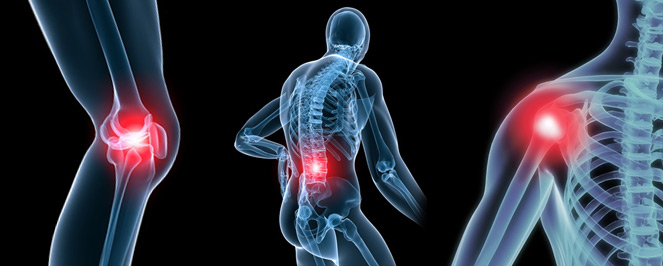
Osteoarthritis (OA) is a type of joint disease that results from breakdown of joint cartilage and underlying bone.
OSTEOARTHRITIES
Osteoarthritis a slowly progressive disorder affecting primarily the weight-bearing di arthrodial joints of the axial and peripheral skeleton. It is characterized by progressive deterioration and loss of articular cartilage, resulting in osteophyte formation, pain, and limitation of motion, deformity, and progressive disability. Inflammation may or may not be present in the affected joints.
Osteoarthritis is a joint disease that mostly affects cartilage. Cartilage is the slippery tissue that covers the ends of bones in a joint. Healthy cartilages allow bones to glide over each other and it also helps in the absorption of shock of the movement. In osteoarthritis, the top layer of cartilage breaks down and wears away. This will allow the bones under cartilages to rub together. The rubbing causes pain, swelling, and loss of motion of the joint.
Causes of osteoarthritis: Joint injury, overweight, genetic defect in joint cartilage, stresses on the joints due to sports.
Diagnosis: Physical examination is important in making the diagnosis.
Treatment: Treatment choices fall into four main categories: non-pharmacologic, pharmacologic, complementary and alternative, and surgical. Generally, the treatment should be begins with the least invasive and safest therapies before proceeding to more invasive, expensive therapies. All the patients with osteoarthritis should be received at least some treatment from the first two categories. Surgical management should be done for those who do not improve with behavioral and pharmacologic therapy, and who have intractable pain and loss of function.
Goals of therapy:
Non pharmacologic therapy:
Pharmacologic therapy:
Acetaminophen: This drug inhibits the prostaglandin synthesis in the central nervous system. It has less effect on cyclooxygenase in peripheral tissues, which accounts for its weak anti-inflammatory activity. Acetaminophen does not affect increase blood clotting time or platelet function.
Therapeutic uses: Analgesic/antipyretic, gout.
Pharmacokinetics: It is rapidly absorbed from the GI tract; first-pass metabolism occurs in the luminal cells of the intestine and in the hepatocytes. In general, acetaminophen is conjugated in the liver to form inactive glucuronidated or sulfated metabolites. Acetaminophen and its metabolites are excreted in the urine.
Adverse effects: minor allergic reactions, skin rash, alterations in the leukocyte count, hypoglycemic coma, renal tubular necrosis.
Celecoxib: Celecoxib is more selective for the inhibition of COX-2 than of COX-1. Celecoxib is approved for treatment of osteoarthritis, rheumatoid arthritis and pain.
Pharmacokinetics: Celecoxib is readily absorbed, reaching a peak concentration in about 3 hours. It is metabolized extensively in the liver by an enzyme cytochrome P450 (CYP2C9) and is excreted in the feces and urine.
Adverse effects: Headache, diarrhea, abdominal pain, and dyspepsia.
Diclofenac: Diclofenac has analgesic, antipyretic, and anti-inflammatory activities. It has potency against COX-2, is substantially greater than that of naproxen, indomethacin, or several other non steroidal anti-inflammatory drugs. Diclofenac appears to reduce intracellular concentrations of free acetic acid in leukocytes, perhaps by altering its release or uptake.
Pharmacokinetics: Diclofenac has rapid absorption, extensive protein binding, and it has a substantial first-pass effect. Diclofenac is metabolized in the liver by a member of the CYP2C subfamily to 4-hydroxydiclofenac, and excreted in the urine and bile.
Therapeutic Uses: It is used in the treatment of rheumatoid arthritis, osteoarthritis, and ankylosing spondylitis. Diclofenac is also useful for short-term treatment of acute musculoskeletal pain, postoperative pain, and dysmenorrhea, an ophthalmic solution of diclofenac is available for treatment of postoperative inflammation following cataract extraction.
Adverse Effects: Rashes, allergic reactions, CNS effects, fluid retention, edema, impairment of renal function.
Ibuprofen: It possesses anti-inflammatory, analgesic, and antipyretic activity and also they can alter platelet function and prolong bleeding time. They are used in the chronic treatment of RA and osteoarthritis. This drug is reversible inhibitors of the cyclo-oxygenases and also inhibits the synthesis of prostaglandins but not of leukotrienes.
Osteoarthrities, disorder of bones